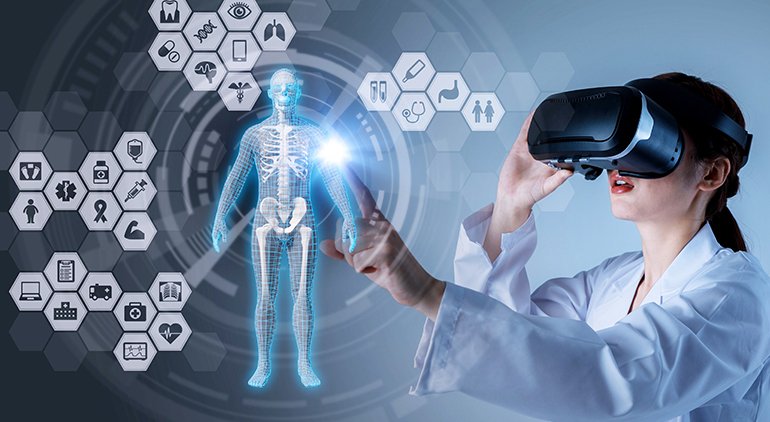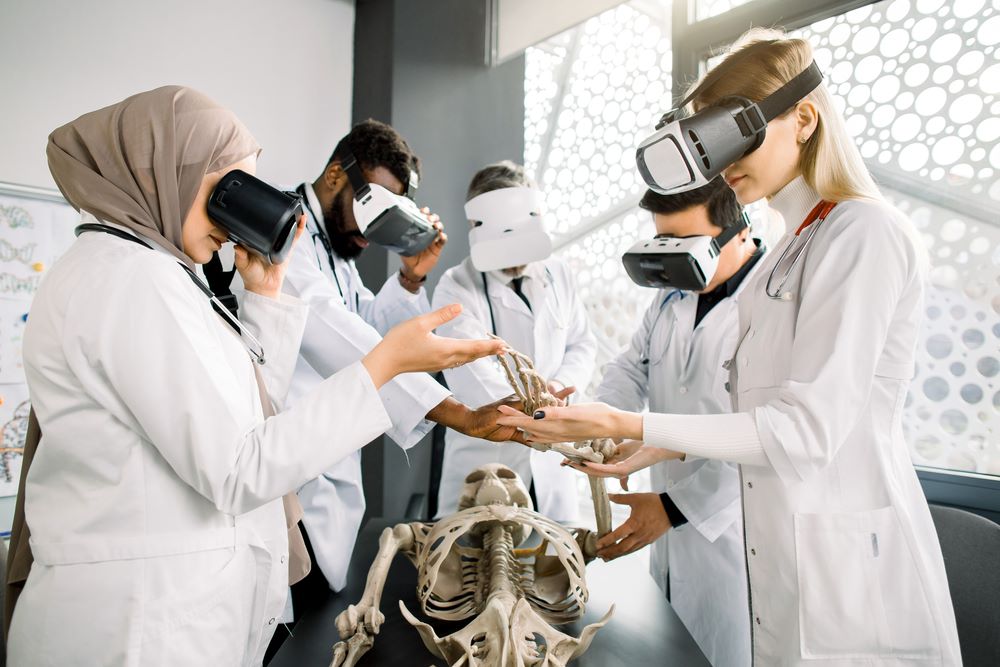How Effective is Virtual Reality in Teaching Human Anatomy?

The technology of Virtual Reality has been applied in the Education Sector plenty of times, and the medical field is currently a highly promising one. One of the major applications of this technology is in the field of human anatomy.
Using computerized 3-D atlases that unify different aspects of human anatomy and physiology and applying that to teaching medical students will revolutionize the teaching of human anatomy.
In this blog, iXR Labs will analyze the effectiveness of virtual reality when it comes to teaching human anatomy in medical colleges.
Challenges of Teaching Human Anatomy in the Past
In the past, monotonous lectures and the dissection of the human body with the help of a mentor were how anatomical skills and knowledge were imparted to medical students.
These days, studying human anatomy from a dissected cadaver is not feasible. Now, modern techniques through the implementation of technology in the form of study modules, computers, and Virtual Reality have become the trend.
Using dead bodies in the dissection room requires close supervision of students. However, in the current times, there are not a lot of anatomists who are qualified enough to handle these students.
Compared to other branches in medical colleges, human anatomy teachers have a higher work load.
Human anatomy in the past decade has had so much emphasis on research for the development of the students’ career that very few students choose to have a career in human anatomy after they graduate.
This has been a rising concern for medical schools these days.
Evolution of Technology in Teaching Anatomy
If we were to observe the field of virtual reality anatomy and human anatomy, we can see how high-resolution copies of anatomical objects are computerized, and the imaging technologies like ultrasound, magnetic resonance imaging, computed tomography, etc., contribute to the intricate virtual landscapes that enhance our understanding of the human body.
Have made it very convenient and easy to procure information about one’s human anatomy technology in detail. However, the usage of technology wasn’t always this normalized.
For a long time, the computerized models for human anatomy VR were only able to be interpreted by seasoned specialists who could understand the context of the model despite its data limitation.
Technology has now evolved such that medical labs are using VR to help their students understand concepts better.
If we were to take an example of one of the iXR Labs’ offerings, we’d see that VR can be used in these medical labs or classes to explore any part of the body, say the lungs.
The student would undergo an immersive experience where they would be able to explore various functions such as Working, Isolation, Inside, and Detailed.
Each of these functions would offer different information about the lungs. They will be able to understand the role played by the trachea, middle lobe, alveoli, etc.
Various modes are also offered, such as X-Ray mode, 360-degree mode, etc. Thus, it’s safe to say that we’ve come a far way from how accessible technology has become.
"Unlock the Future of Learning: Dive into Virtual Reality and Experience the Wonders of Human Anatomy Education!"
Teaching Human Anatomy through Virtual Reality

With new educational methods developing, the medical education system has turned towards using virtual reality for higher education. Using computer-based 3D models in human anatomy VR is becoming a norm now. This is because of the extremely immersive experience it offers.
In iXR Labs, the medical labs offer the option of changing the view of the organ through virtual reality anatomy that the student is observing. They can see the working of the walls of the heart, the role played by arteries and veins, and how the aortic valve is essential in ensuring the heart functions well.
They can use the cross-sectional view, outer view, and how pericardial view. Let’s explore some more applications of using VR.
1. VR is a technology that enables students to explore and engage with the various anatomical objects in real-time leading to an active learning experience.
2. VR uses head-mounted displays, also called HMDs to provide a highly immersive technology in education experience and a computer desktop for a less immersive one.
3. As compared to residents, medical students have lesser clinical experiences. VR can be used to motivate them and make them highly efficient by simulating the human anatomy technology and enabling them to practice on it.
4. Dissection is usually referred to as the standard teaching method for human anatomy. VR can be used to supplement dissection by using lesser resources and reducing the number of hours spent in the lab.
 Get the App from Meta Store: Download Now
Get the App from Meta Store: Download Now
Challenges of Using VR in Human Anatomy
It shouldn’t be a surprise that using technology in education can also have its disadvantages. Let us discuss a few possibilities.
1. Using VR for complex organs can be disorienting and frustrating.
2. Students could also feel cybersickness, such as nausea and headache because the simulation might feel too real. Students can also get blurry vision and feel disoriented after using VR for too long.
3. The cost of VR will have to be considered while applying it in medical colleges.
4. When students practice on a dead body in the dissection room, they undergo feelings of anxiety and grief. Slowly, they will learn to detach from their compassion in order to prepare to be good physicians that can cope with death and loss. VR might not be able to facilitate this skill.
Conclusion
Using VR in the education sector is not something new anymore, as it has been emerging for quite a while. It has the potential to completely transform how medical classes are conducted.
When compared to traditional methods that used 2-D, VR has proven to be highly effective in teaching human anatomy.
This trend is here to stay and iXR Labs, which also specializes in offering Virtual Reality Labs for Medical Colleges, will stay updated with further trends in this sector. Stay tuned!
.png)




